– By #Pioneer Auto Show
When automobiles were first created, only the wealthy families could afford them. Road trips were a high class privilege until after World War II when everyone was able to venture out and see the United States for themselves. The entire nation was every family’s dream to explore from coast to coast in their automobiles. Since then, road trips continue to be a symbol of freedom and adventure.
The Beginning: Early 1900s
The first road trip in North America took place in 1903 in a Winton Touring Car. The road trip lasted 63 days between San Francisco, CA to Manhattan, New York. The total cost of the trip for the two young men traveling was $8,000 ($212,000 in today’s money) including the automobile, gasoline, food, lodging, tires, and other supplies. New highways built in the early 1900s helped propel road trips in the United States. Route 66 was commissioned in 1926 and completely paved in the 1930s and today, remains a living icon of early road trips. Automobiles of all kinds continue to drive on portions of the Historic Route 66 even though it was removed from the US Highways System in 1985.
The Middle: Mid 1900s
The 1940s and ‘50s brought more modern roads as well as showing the new nation was on the move. With the amount of roads being placed, more families started buying their own automobiles. Automobiles became a more trusted mode of transportation for commuting and leisure trips. “Vacation-by-Road” was becoming the new style in America; many businesses were creating services for weary travelers on these road trips. With these services, the amount of time spent on the road in automobiles was reduced from months to days, creating more opportunities for American families to see the most of their nation. The Interstate Highway System was authorized in 1956 with Missouri, Kansas and Pennsylvania receiving the first contracts for this system. Throughout the mid to late ‘90s, other states continued to build interstates to make travel in automobiles faster on road trips.
The Present: Late 1900s to Now
There are three different coast-to-coast interstate systems in the United States: I-80, I-10 and I-90. Each of these interstates makes road trips faster and more convenient for those traveling in automobiles. I-80 was the world’s first contiguous freeway to span from the Atlantic to the Pacific Ocean and in 1986, was the longest one too. This interstate runs from San Francisco, CA to Teaneck, New Jersey. I-10 was finished in 1990 after a freeway revolt that delayed the original plan of the route for road trips. This interstate runs from Santa Monica, CA to Jacksonville, FL with an underpass built below downtown Phoenix, AZ. I-90 is the final coast-to-coast highway system going from Seattle, WA to Boston, MA. This interstate was finished in 1991 and has a dedicated of an elevated viaduct (bridge with several small spans to cross a valley) in Wallace, ID. Residents forced the cancellation of the originally planned construction in downtown Wallace by declaring it a historic district. The interstate system continues to expand and discontinue spots around the nation for road trips in various types of automobiles. Along that highway lies Murdo and the Pioneer Auto Show, just at the intersection of Highway 83 and I-90.
Do you think you have what it takes to make many summer road trips in fast automobiles on the ever changing highway systems? Make sure to stop by the Pioneer Auto Show to take a look at some of the unique automobiles that are from the early 1900s to the early 2000s and figure out which one you’d take road trips in today!
Last Modified:




